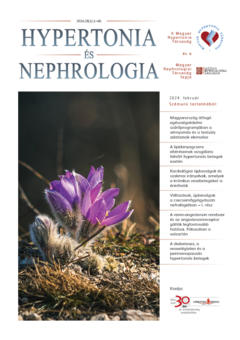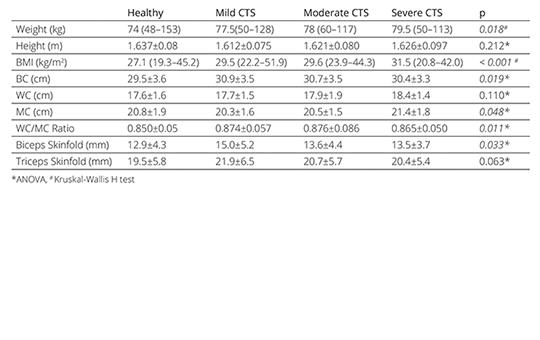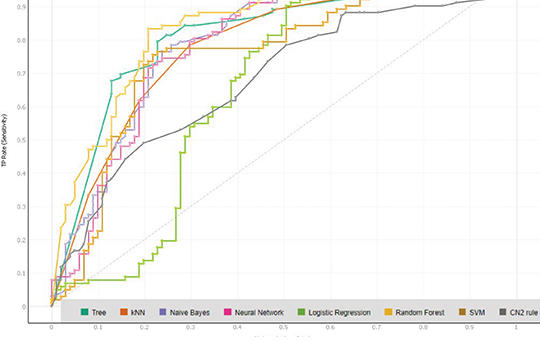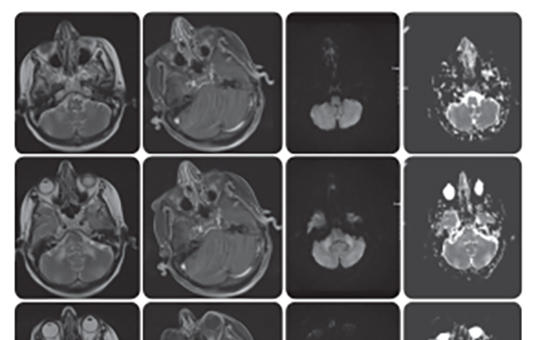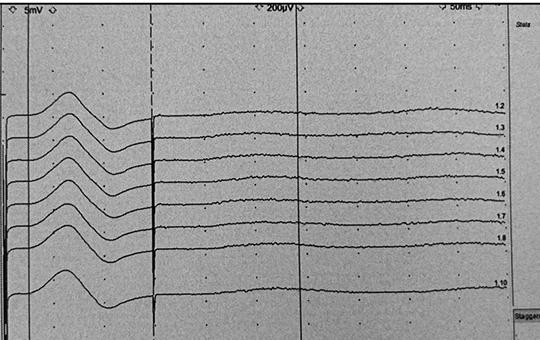The eLitMed.hu medical portal uses computer cookies for convenient operation. Detailed information can be found in the Cookie-policy.
Specialities
Nephrology
[Novelties and guidelines in cardiology, which can affect patients with chronic kidney failure]
[In cardiological guidelines, many strategic drugs (ACE-inhibitor/ARB, ARNi, beta-blocker, MRA, SGLT2-inhibitor) have made their way into recommendations with 1A level evidence for the prevention and treatment of cardiovascular diseases, depending on the type and severity of cardiovascular involvement and the co-incidence of other various comorbidities in heart conditions. In this summary we are going to elaborate on the fundamental
characteristics of classes of medications with different mechanism of actions,
cardiological evidences for their applications, their effects on patients with chronic renal diseases –, including those with end-stage renal diseases-, focusing mostly on their common cardio- and renoprotective attributes and the cardiological guidelines and the recommendations for patients with chronic renal failure, without attempting to be comprehensive.]
[Association of upper extremity anthropometry and subcutaneus adipose tissue with carpal tunnel syndrome]
[Body mass index (BMI) is positively correlated with the frequency of carpal tunnel syndrome (CTS). However, there are different types of obesity, and the localization of adipose tissue differs between the genders. In this study, we purposed to investigate whether there was an association between the amount of local adipose tissue thickness and anthropometry in upper extremity with the presence and/or electrophysiological severity of CTS on both genders. ]
MRI radiomics based machine learning model of the periaqueductal gray matter in migraine patients
The aim of the study was to investigate the question: Can MRI radiomics analysis of the periaqueductal gray region elucidate the pathophysiological mechanisms underlying various migraine subtypes, and can a machine learning model using these radiomics features accurately differentiate between migraine patients and healthy individuals, as well as between migraine subtypes, including atypical cases with overlapping symptoms?
Progressive multifocal leukoencephalopathy with a benign prognosis in an immunocompetent patient – A case report
John Cunningham virus (JCV) is most commonly acquired in childhood and is often asymptomatic throughout life. However, in the case of primary or secondary immunosuppression, it is known to cause progressive multifocal leukoencephalopathy (PML) in the central nervous system. Hereby, we describe a rare case of PML in a patient without known factors of immunosuppression or use of immunomodulation.
[Guillain-Barré syndrome caused by intravesical instillation of Bacillus Calmette-Guérin]
[ Guillain-Barré syndrome is an acute inflammatory demyelinating polyneuropathy. In the vast majority of patients, 1-4 weeks before the onset of GBS-related symptoms, an event such as upper respiratory tract or gastrointestinal tract infection, surgical intervention or vaccination is present. To the best of our knowledge, this is the first case of GBS that occurred after intravesical Bacillus Calmette-Guérin therapy in the absence of tuberculosis or any other infection in the English literature.]
[Pharmacotherapy of chronic heart failure with reduced ejection fraction: vericiguat, the developing 5th pillar? ]
[The incidence and prevalence of chronic heart failure (HF) is increasing worldwide, its morbidity and mortality remains high, and its adequate management is of paramount importance. Currently the treatment of heart failure with reduced ejection fraction (HFrEF) relies on four pillars: ACE inhibitors/ARNI, β-blockers, MRAs, and as the newest class, SGLT-2 inhibitors, all of which have been proven to reduce mortality and morbidity in HFrEF patients. A relatively new therapeutic option for the pharmacotherapy of HFrEF is vericiguat a soluble guanylate cyclase stimulator, which modifies the NO-sGC-cGMP signaling pathway impaired in heart failure patients. Vericiguat activates the sGC enzyme independently of the presence of nitric oxide, resulting in elevated intracellular cGMP levels, which can improve endothelial, myocardial, and vascular functions alike. Safety and efficacy of vericiguat were confirmed in the VICTORIA trial. Vericiguat significantly reduced the composite endpoint of HF hospitalization and cardiovascular death compared to placebo in chronic HF patients recently hospitalized for HF or requiring parenteral diuretic therapy with an ejection fraction worse than 45%. The relative risk reduction was 10%, and the absolute risk reduction was 4.2% in the vericiguat group. Due to the positive outcomes observed in the VICTORIA trial, vericiguat was included as a new pharmacotherapeutic option in the 2021 ESC Heart Failure guidelines. The current recommendation suggests the use of vericiguat with a level IIb evidence for HFrEF patients who recently required medical care due to heart failure progression despite optimal pharmacotherapy. ]
1.
Clinical Neuroscience
[Headache registry in Szeged: Experiences regarding to migraine patients]2.
Clinical Neuroscience
[The new target population of stroke awareness campaign: Kindergarten students ]3.
Clinical Neuroscience
Is there any difference in mortality rates of atrial fibrillation detected before or after ischemic stroke?4.
Clinical Neuroscience
Factors influencing the level of stigma in Parkinson’s disease in western Turkey5.
Clinical Neuroscience
[The effects of demographic and clinical factors on the severity of poststroke aphasia]1.
2.
Clinical Oncology
[Pancreatic cancer: ESMO Clinical Practice Guideline for diagnosis, treatment and follow-up]3.
Clinical Oncology
[Pharmacovigilance landscape – Lessons from the past and opportunities for future]4.
5.
